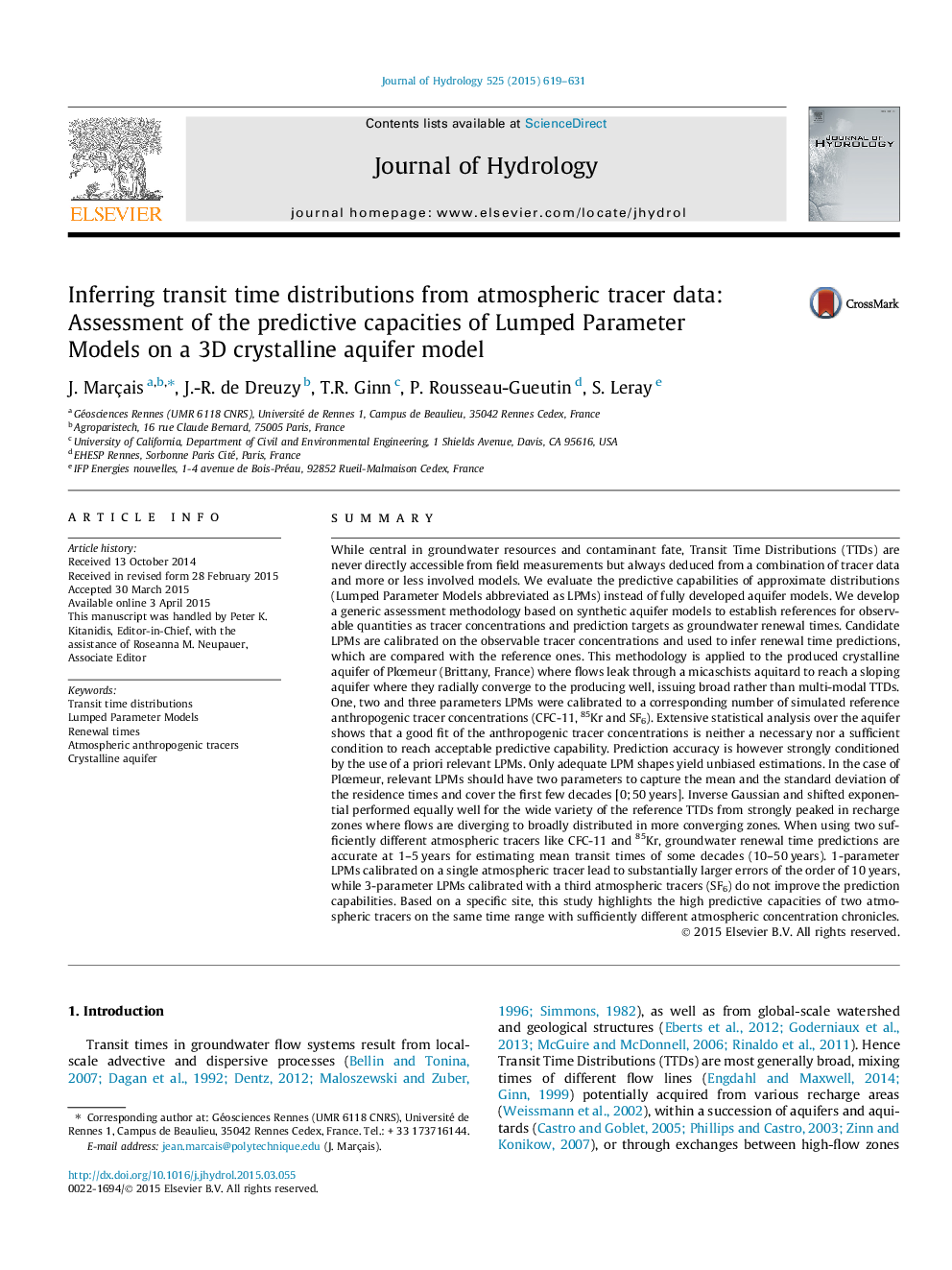| کد مقاله | کد نشریه | سال انتشار | مقاله انگلیسی | نسخه تمام متن |
|---|---|---|---|---|
| 6410660 | 1629925 | 2015 | 13 صفحه PDF | دانلود رایگان |

- Analysis of Transit Time Distributions (TTDs) on a crystalline aquifer model.
- Prediction of renewal times of the aquifer from environmental tracers.
- High predictive capacities of lumped models with two parameters requiring two tracers.
- Shape of the TTDs is not critical beyond the first 2 moments of the distribution.
SummaryWhile central in groundwater resources and contaminant fate, Transit Time Distributions (TTDs) are never directly accessible from field measurements but always deduced from a combination of tracer data and more or less involved models. We evaluate the predictive capabilities of approximate distributions (Lumped Parameter Models abbreviated as LPMs) instead of fully developed aquifer models. We develop a generic assessment methodology based on synthetic aquifer models to establish references for observable quantities as tracer concentrations and prediction targets as groundwater renewal times. Candidate LPMs are calibrated on the observable tracer concentrations and used to infer renewal time predictions, which are compared with the reference ones. This methodology is applied to the produced crystalline aquifer of PlÅmeur (Brittany, France) where flows leak through a micaschists aquitard to reach a sloping aquifer where they radially converge to the producing well, issuing broad rather than multi-modal TTDs. One, two and three parameters LPMs were calibrated to a corresponding number of simulated reference anthropogenic tracer concentrations (CFC-11, 85Kr and SF6). Extensive statistical analysis over the aquifer shows that a good fit of the anthropogenic tracer concentrations is neither a necessary nor a sufficient condition to reach acceptable predictive capability. Prediction accuracy is however strongly conditioned by the use of a priori relevant LPMs. Only adequate LPM shapes yield unbiased estimations. In the case of PlÅmeur, relevant LPMs should have two parameters to capture the mean and the standard deviation of the residence times and cover the first few decades [0;Â 50Â years]. Inverse Gaussian and shifted exponential performed equally well for the wide variety of the reference TTDs from strongly peaked in recharge zones where flows are diverging to broadly distributed in more converging zones. When using two sufficiently different atmospheric tracers like CFC-11 and 85Kr, groundwater renewal time predictions are accurate at 1-5Â years for estimating mean transit times of some decades (10-50Â years). 1-parameter LPMs calibrated on a single atmospheric tracer lead to substantially larger errors of the order of 10Â years, while 3-parameter LPMs calibrated with a third atmospheric tracers (SF6) do not improve the prediction capabilities. Based on a specific site, this study highlights the high predictive capacities of two atmospheric tracers on the same time range with sufficiently different atmospheric concentration chronicles.
Journal: Journal of Hydrology - Volume 525, June 2015, Pages 619-631